Nxt Museum: A Black Box for Digital Art in Former Siberia
Nxt Museum represents both a new museum for Amsterdam and an art institution for a new generation. Contents, appearance and organisation are all out of the ordinary.
A first makes people curious and generates good PR. But people can be quick to claim a first without checking the facts. At the end of August, for instance, the Dutch newspaper AD announced that in 2024 Utrecht was to gain a branch of the Japanese Nowhere, which would be ‘the first museum of digital art in Europe’. The newspaper’s statement failed to take into account the Museum for Digital Art in Zürich, which opened its doors in 2016 and recently closed them for good due to Covid-19. But Nxt Museum in Amsterdam is also ahead of Nowhere.
Nxt Museum, which opened on 29 August, in turn, claims to be ‘the first museum for digital art in the Netherlands’, again incorrectly. From 1994 to 2012 the Netherlands Media Art Institute (NIMk) presented an impressive series of exhibitions involving video and new media art. The exhibition space of its successor LIMA may be tiny but still offers cutting edge digital art.
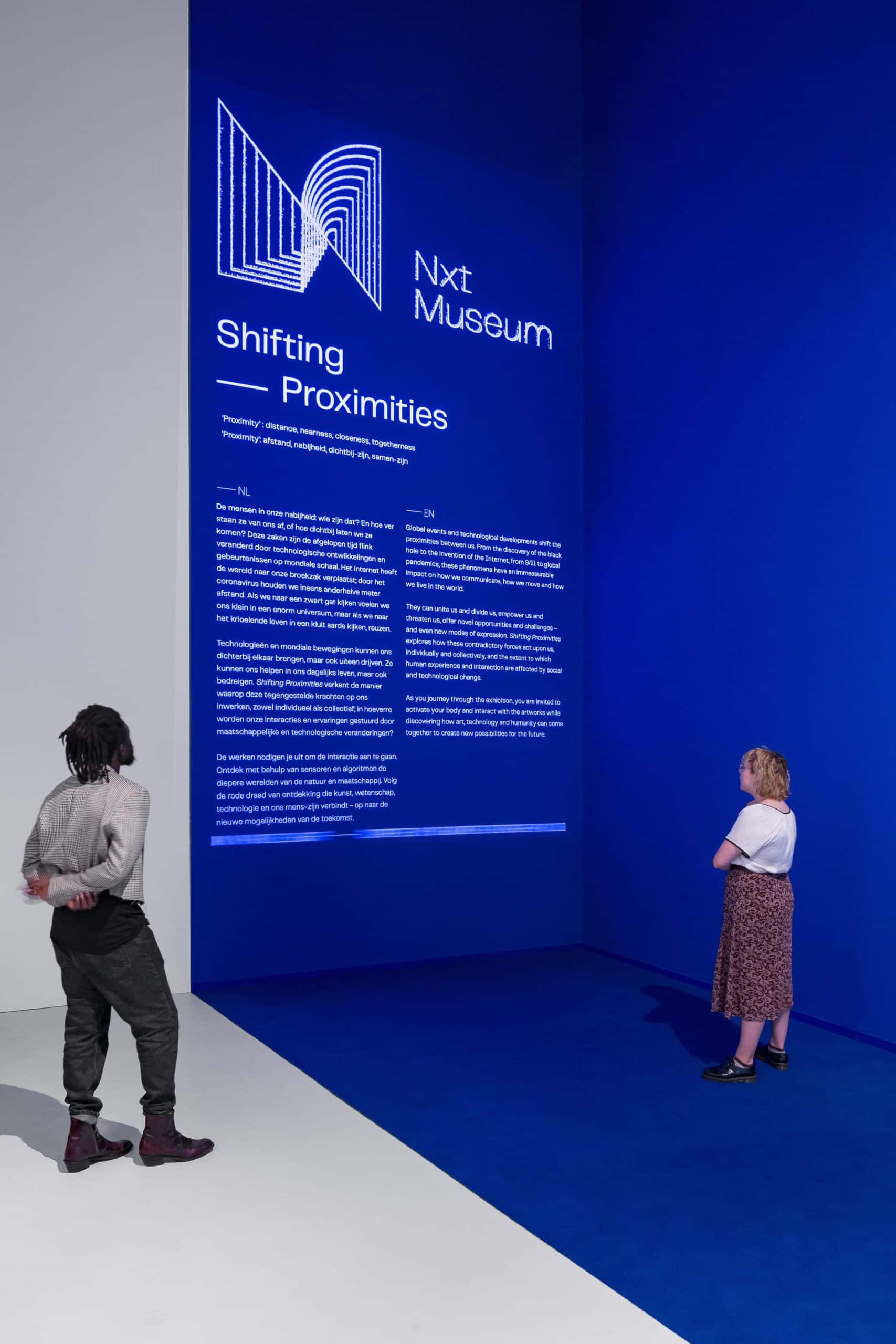 'Shifting Proximities', the inaugural exhibition of Nxt Museum
'Shifting Proximities', the inaugural exhibition of Nxt Museum© Peter Tijlhuis
Even in its use of the term ‘museum’, Nxt Museum slightly oversteps the mark. It’s not a museum, since it lacks its own collection. The eight works in the opening exhibition Shifting Proximities have not been purchased and it remains to be seen whether that will happen. The label ‘presentation room’ or ‘art centre’ would be more appropriate, but perhaps this initiative requires us to come up with new terminology.
After all, Nxt Museum certainly contributes something new to the Dutch artistic landscape. We did not previously have a place like this, exhibiting large digital works of art for longer periods of time. Nxt Museum can best be compared with Art Basel Unlimited, the showcase for extra-large art from the world’s biggest art fair, but this is a very specialised format with a running time of at least five months instead of five days. That increases the visibility of these kinds of artworks, which normally only gain prominence at festivals such as Gogbot and Impakt. With the exception of Lucy McRae’s Biometric Mirror, which formed part of the exhibition Bodydrift – Anatomies of the Future in Design Museum Den Bosch until 4 October, the exhibits at Nxt Museum have not previously been on show in the Netherlands.
Biometric Mirror scans the faces of visitors and reconstructs them based on measurement points, resulting in monstrously distorted portraits. The implicit criticism of incompetent facial recognition software is embedded in an installation reminiscent of Claes Oldenburg’s soft sculptures: rounded dressing tables and boudoir furniture that invites viewers to touch it. The tactile presentation and interactive character of Biometric Mirror are typical of the entire exhibition, which according to curator Bogomir Doringer can be viewed as a pilot study for the programme to come. This is no cerebral conceptual art with explanatory text labels: this is directly appealing work in which viewers can immerse themselves, body and mind.
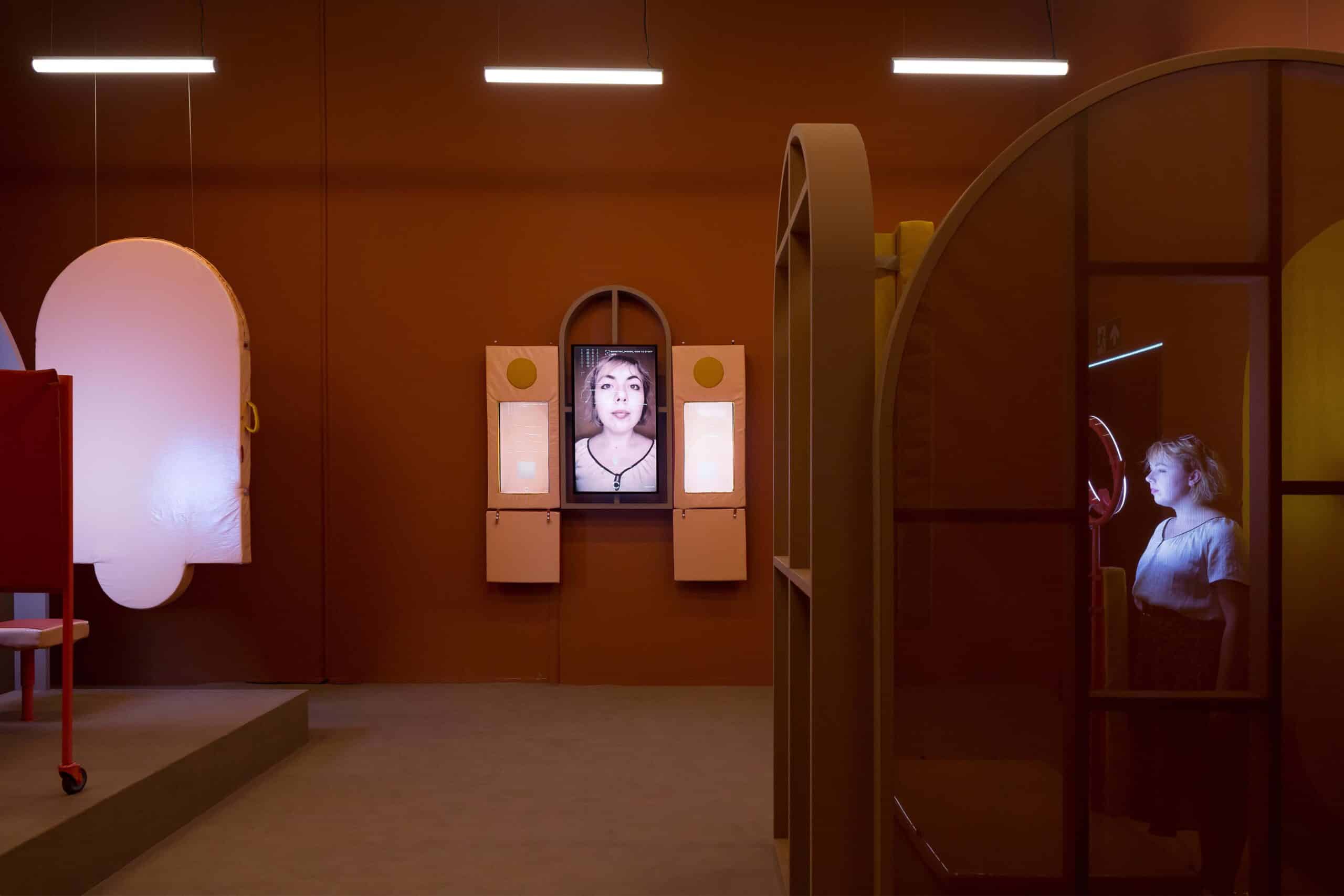 'Biometric Mirror' by Lucy Mc Rae and Dr. Niels Wouters
'Biometric Mirror' by Lucy Mc Rae and Dr. Niels Wouters© Peter Tijhuis
The first work, Connected by Roelof Knol, sets the tone right away. Light projections move with the visitors and reveal the size of personal and shared space – providing understated and up-to-the-minute commentary on the 1.5-metre distancing rules. In the next room, 25 metres in length, Topologies #1 by United Visual Artists plays with perspective by stretching and tilting a rectangle using a laser projection, putting one’s sense of measurement and proportion to the test in the smoke-filled room.
The absolute showstopper of Shifting Proximities is Distortions in Spacetime by Marshmallow Laser Feast, an overwhelming animation of a dying supernova and the creation of a black hole, projected in a mirror room similar to Yayoi Kusama’s Infinity Room.
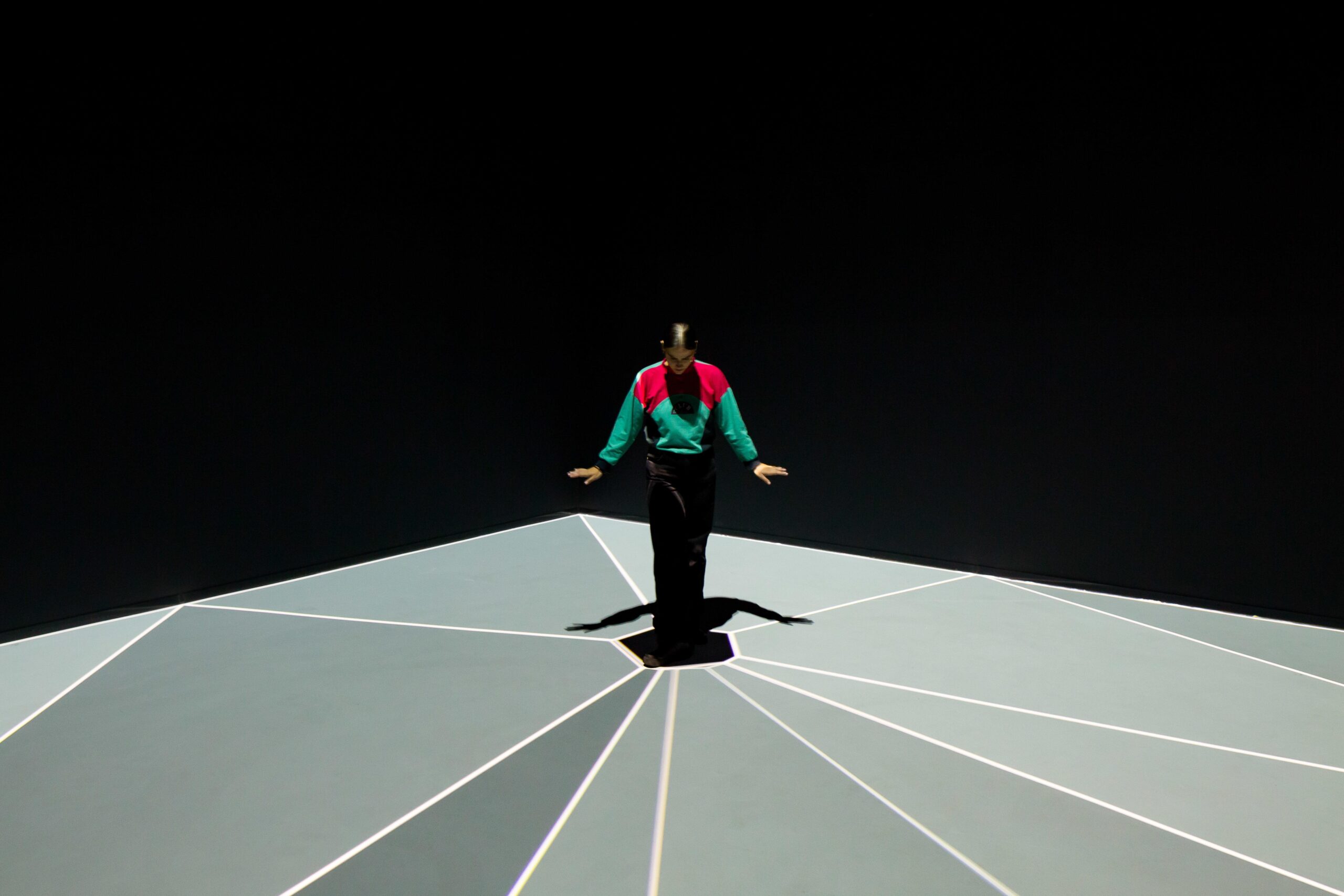
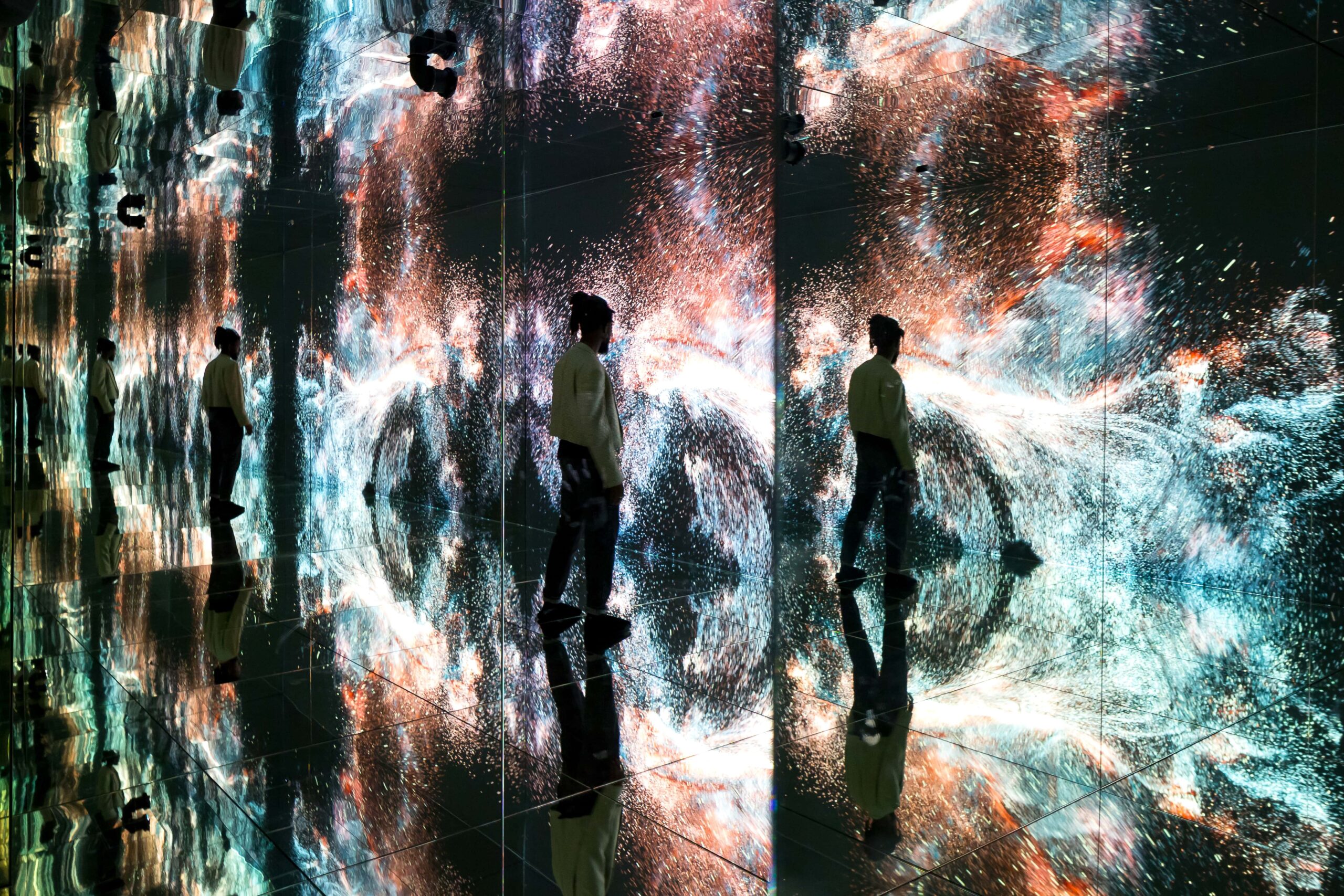 'Connected' by Roelof Knol / 'Distortions in Spacetime' by Marshmellow Laser Feast
'Connected' by Roelof Knol / 'Distortions in Spacetime' by Marshmellow Laser Feast© Peter Tijhuis
Beyond experiences
The list above might create the impression that Nxt Museum offers ‘experiences’ for the Instagram generation, but comparisons with the selfie museums Wondr and Youseum, which also recently opened, are not justified. Besides an experience, Nxt Museum offers content, sometimes even content with strong educational intentions, but often from unexpected perspectives. For instance, in the large work Dimensional Sampling #1, Chinese artists Yuxi Cao and Lau Hiu Kong reveal the unexpected beauty of QR-codes. The rhythmic projection that resembles an animated Rorschach test, bridges the gap between the analogue human brain and the artificial intelligence stored in those hermetically sealed blocks of code.
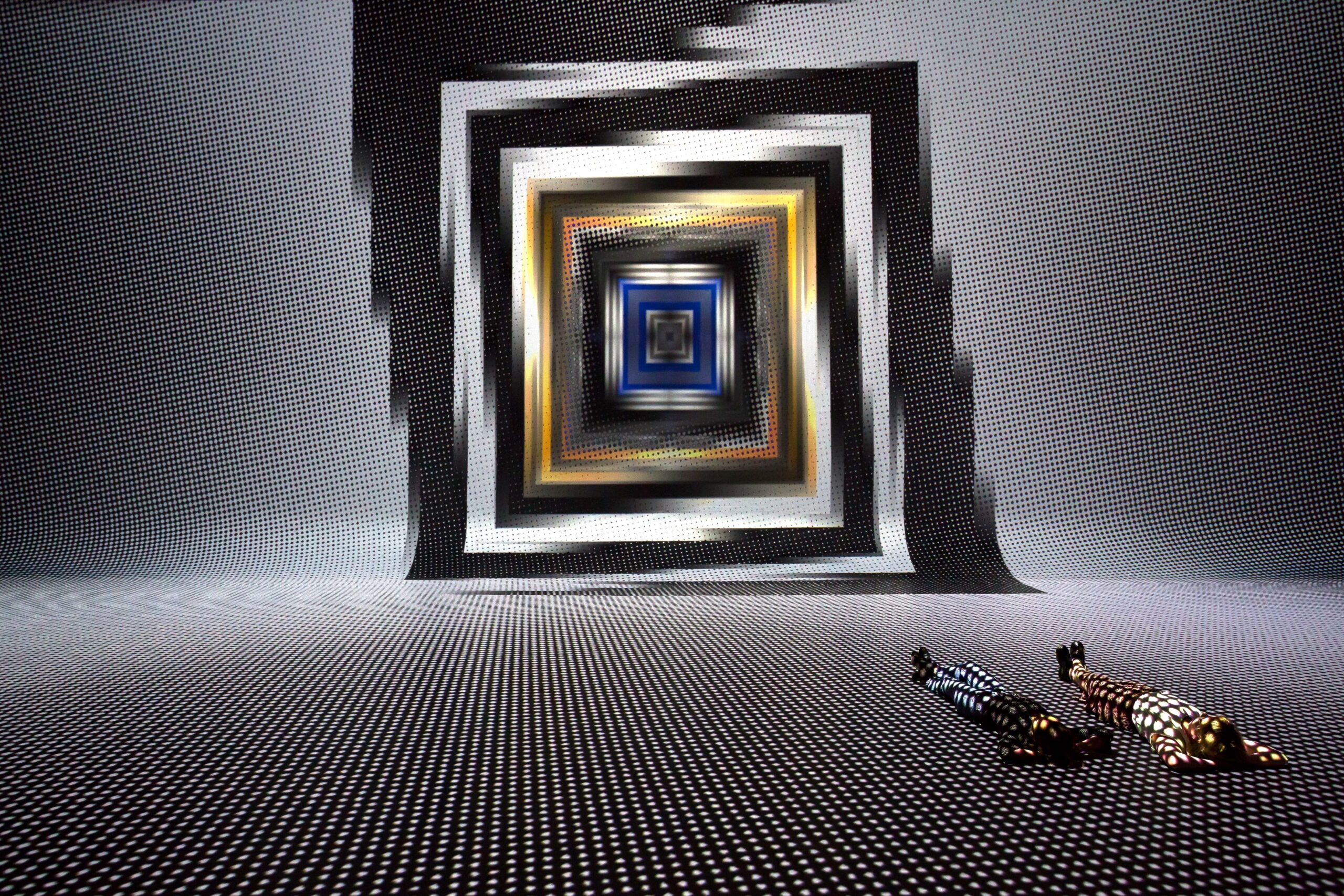 'Dimensional Sampling #1' by Yuxi Cao and Lau Hiu Kong
'Dimensional Sampling #1' by Yuxi Cao and Lau Hiu Kong© Peter Tijhuis
What you do miss is a critical note about the surveillance society which this kind of technology so often forms a part of. Engagement can be found in Econtinuum by Thijs Biersteker, but here too it takes the form of cheerful admiration rather than the dystopian alarmism associated with a great deal of art about the environment and climate. Biersteker’s sculpture is made of recycled plastic and depicts the root system of trees. Spots of light move at varying speeds between the different organisms and thus represent the communication which scientific research has shown really takes place in the plant world. As visitors approach, they influence the light pattern and become part of ‘the conversation’. The message is playfully presented: you’re part of the ecosystem too, so be sure to keep it in one piece.
For Econtinuum Biersteker collaborated with Italian botanist Stefano Mancuso, just as all the works in Shifting Proximities in fact turn out to be realised by collectives. Nxt Museum also served as the producer in a number of cases. In Nxt Lab, to be launched later this year, the institution also wants to offer a workplace to develop new concepts and test them on a large scale.
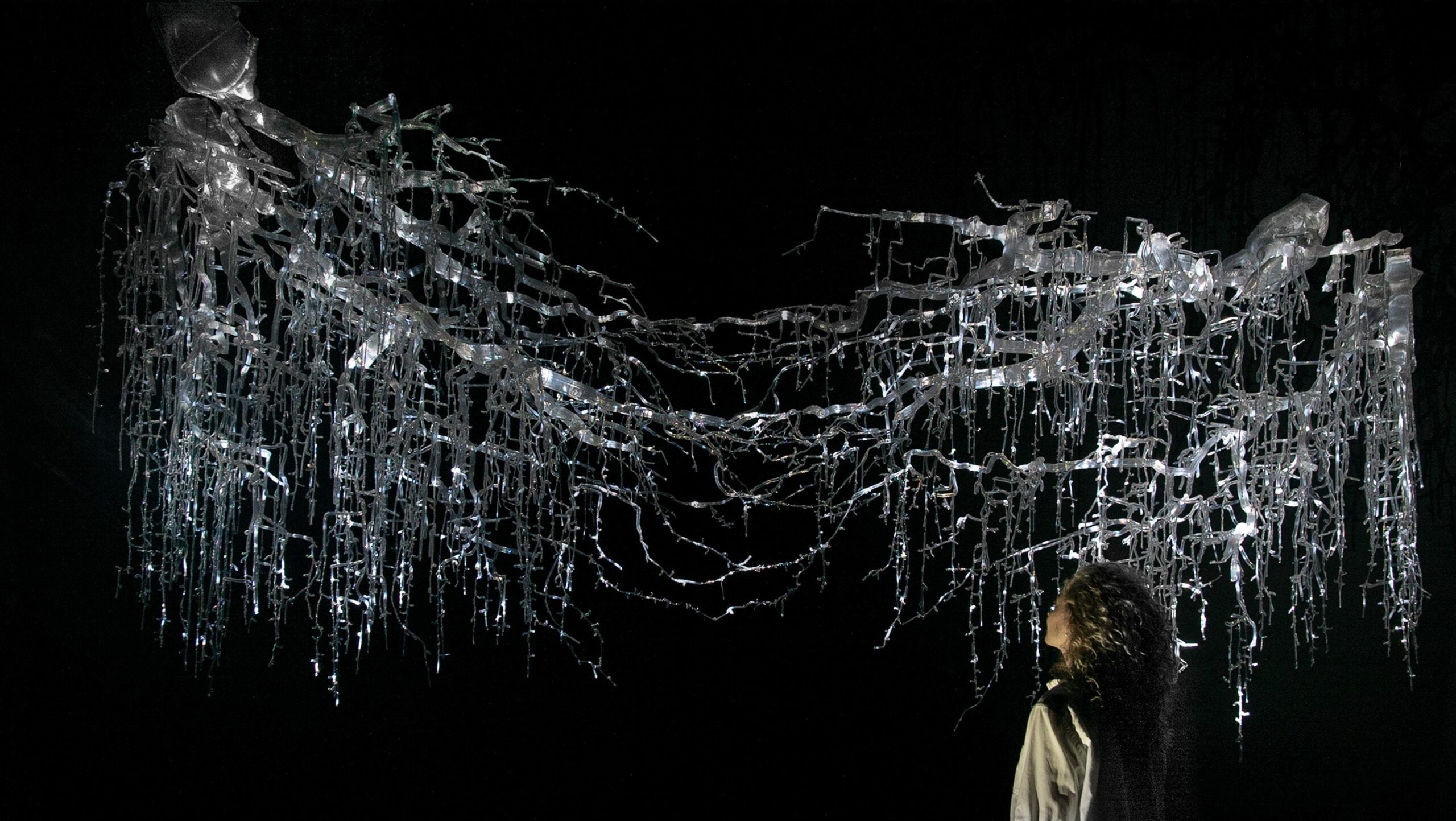 'Econtinuum' by Thijs Biersteker in collaboration with Stefano Mancuso
'Econtinuum' by Thijs Biersteker in collaboration with Stefano Mancuso© Thijs Biersteker
The residents of Nxt Lab will stay for a couple of months in what is now seen as the most exciting district of Amsterdam. For decades Noord has been seen as a ‘Siberia on the wrong side of the river IJ’ but it is rapidly becoming hip. At first sight, Asterweg looks like a succession of sheds and garages, but just next to Nxt Museum is the Collection Centre building of film museum Eye and on the other side of the street is the former studio of sculptor André Volten, where a substantial sculpture garden is in progress.
In any case, an institution such as Nxt Museum would not have fitted in a canal-side building such as the one that housed the NIMk. The work on show does not lend itself to the classic white cube, instead demanding a theatrical black box. The former TV studio in Noord fits perfectly. The premises offer 1400 square metres of exhibition floor space, as many as six power supplies, a reinforced floor and steel beams on the gorgeous high ceiling to hang the incredible quantities of equipment from.
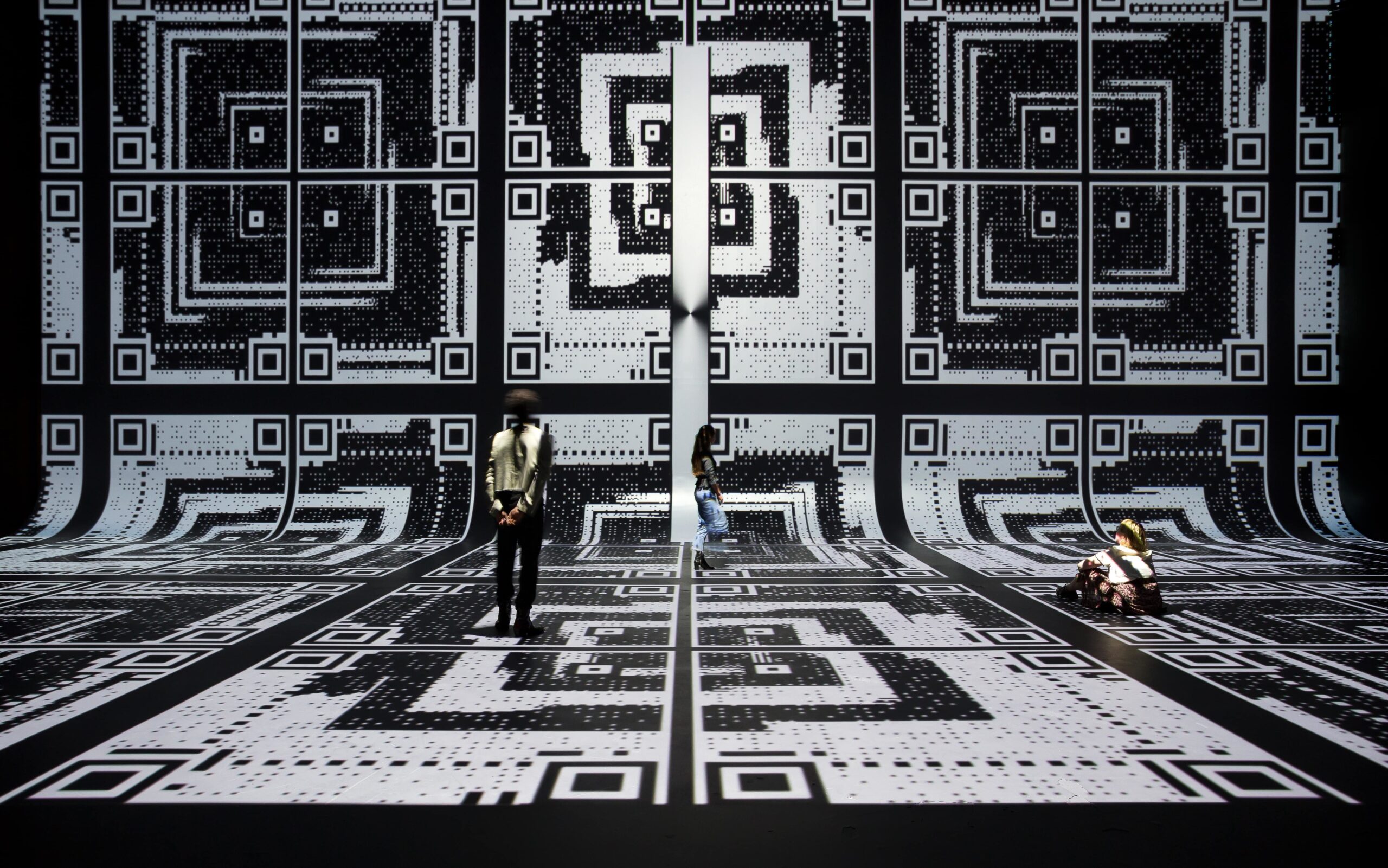 'Dimensional Sampling #1' by Yuxi Cao and Lau Hiu Kong
'Dimensional Sampling #1' by Yuxi Cao and Lau Hiu Kong© Peter Tijhuis
Initially, the space was empty, but during the Covid lockdown, a construction team has installed partially movable walls. The largest room, the 320 square metres Nxt Stage, where Dimensional Sampling #1 is displayed, can be hired for product presentations, fashion shows and other events. That immediately speaks volumes about Nxt Museum’s funding and business model. Exhibition rooms and offices have been constructed in just four months, without a cent from subsidies. The local Rabobank came up with a loan and a group of private investors topped up the rest.
Commercially run business
Entrepreneurship is currently a high priority in the Dutch museum sector, and Nxt Museum is truly a commercially run business. Founder Merel van Helsdingen comes from the world of marketing and sales, having worked for companies such as Apple and Tommy Hilfiger. Her partner Natasha Greenhalgh won her spurs as an architect and designer of shop interiors. And of the eleven other positions on the ‘lean & mean’ staff, only two focus on the content of the art.
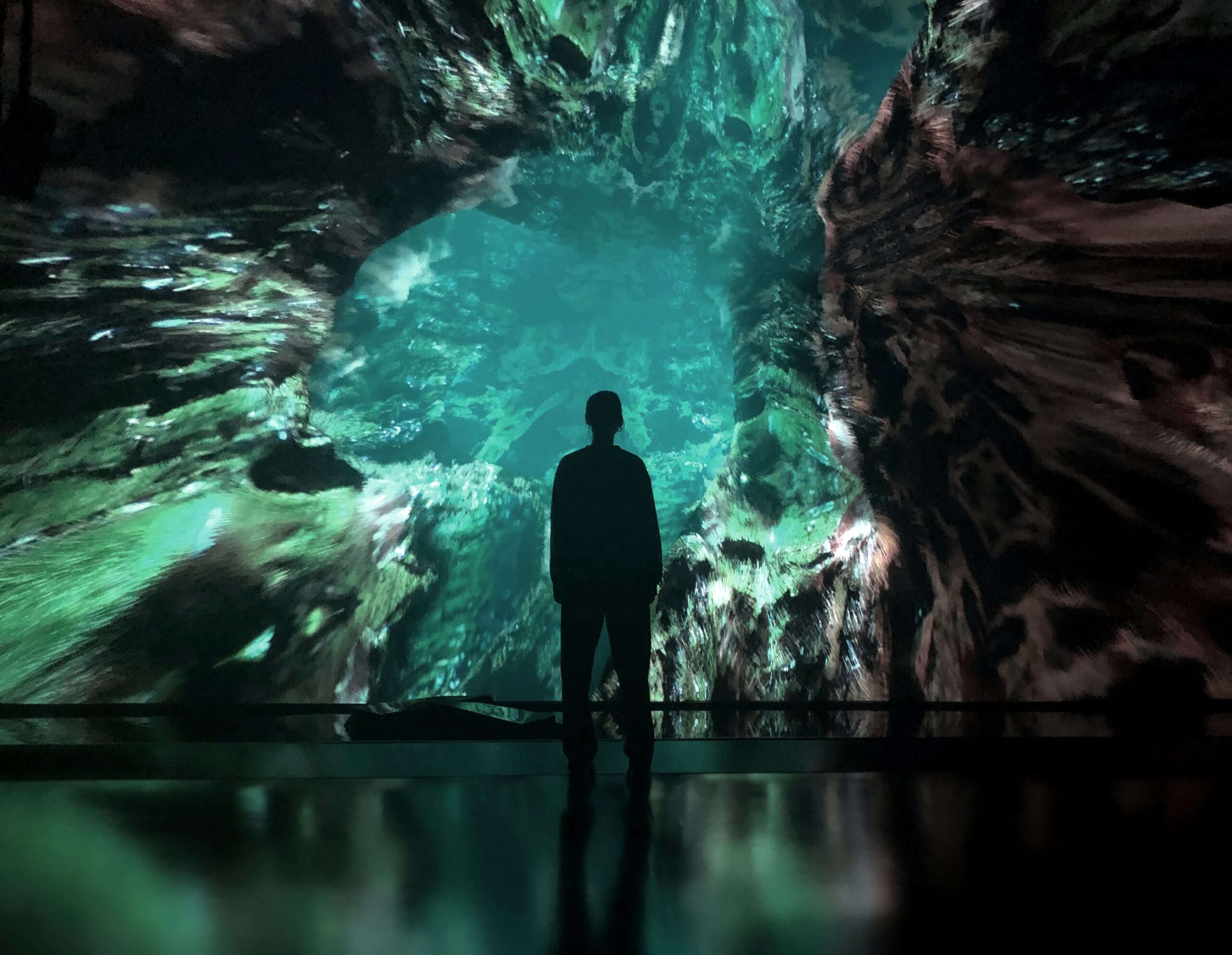 'Habitat' by Heleen Blanken with Naivi and Stijn van Beek
'Habitat' by Heleen Blanken with Naivi and Stijn van Beek© Heleen Blanken
Nevertheless, Nxt Museum feels more like the similarly private Museum Voorlinden in Wassenaar than an institution like Moco, that entices tourists in from the Museumplein with third-rate Banksy prints. The catering is stylish, but not to the standard of Rijks at the Rijksmuseum, which targets high-end dining. Merchandise is sold, but none of the ubiquitous mugs and jigsaw puzzles: instead they sell handy covers for your laptop camera. Most of their revenue comes from ticket sales, which raises questions for Nxt Museum’s viability in the longer term. A ticket price of €24.50 is on the high side, especially in a country where most culture-lovers have a Museum Pass and are used to entering for free. We just have to hope that Nxt Museum succeeds in tapping into a new generation of art consumers, who have no problem with spending the equivalent of three cinema tickets on their visit.












